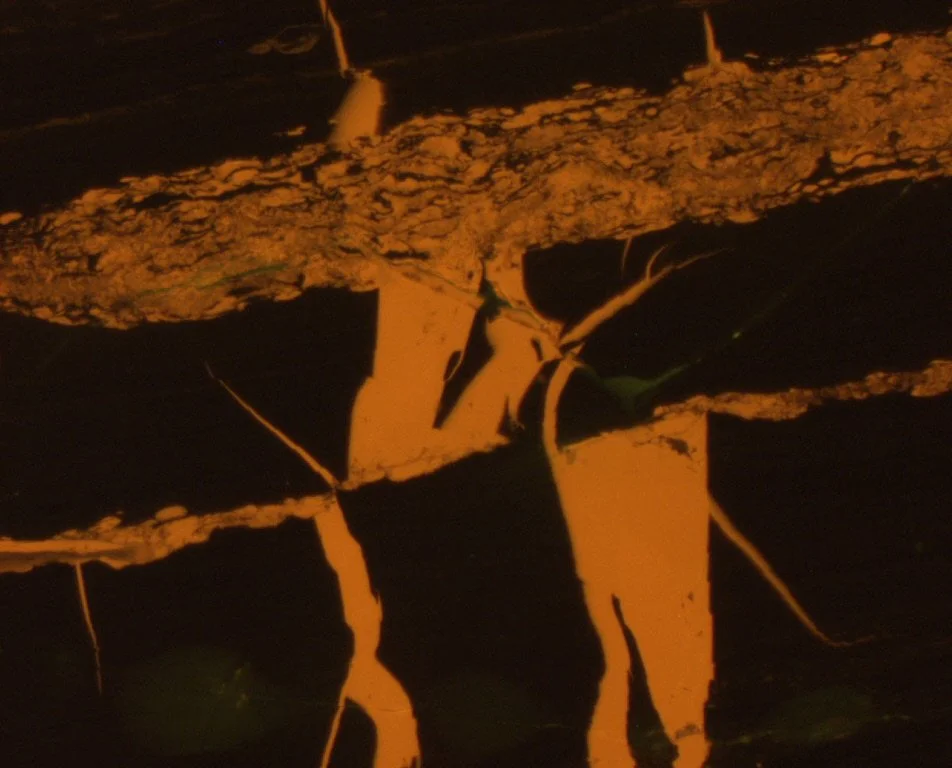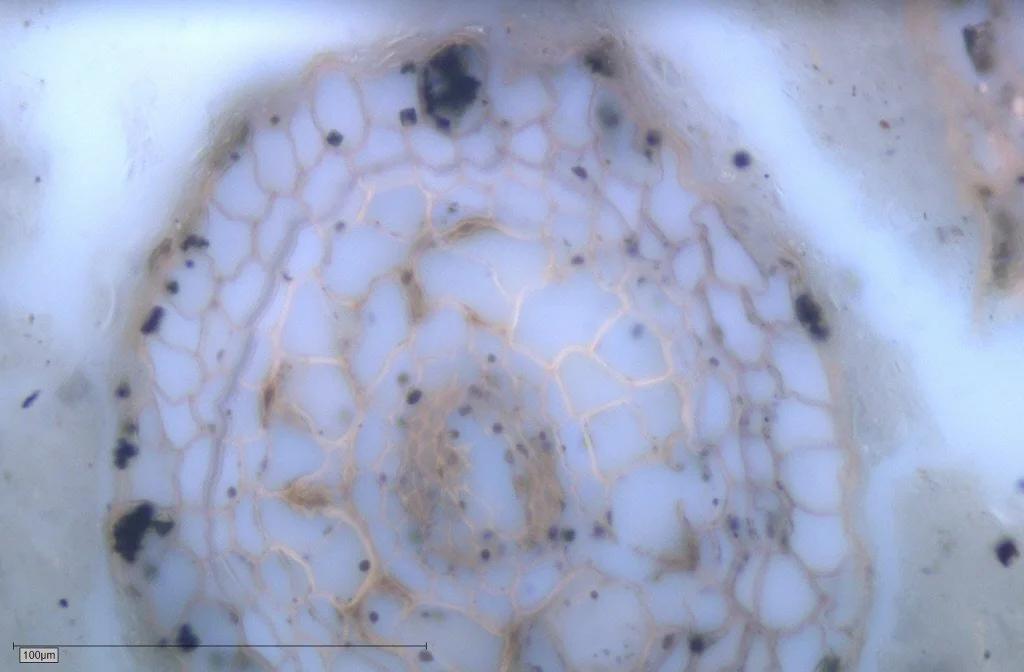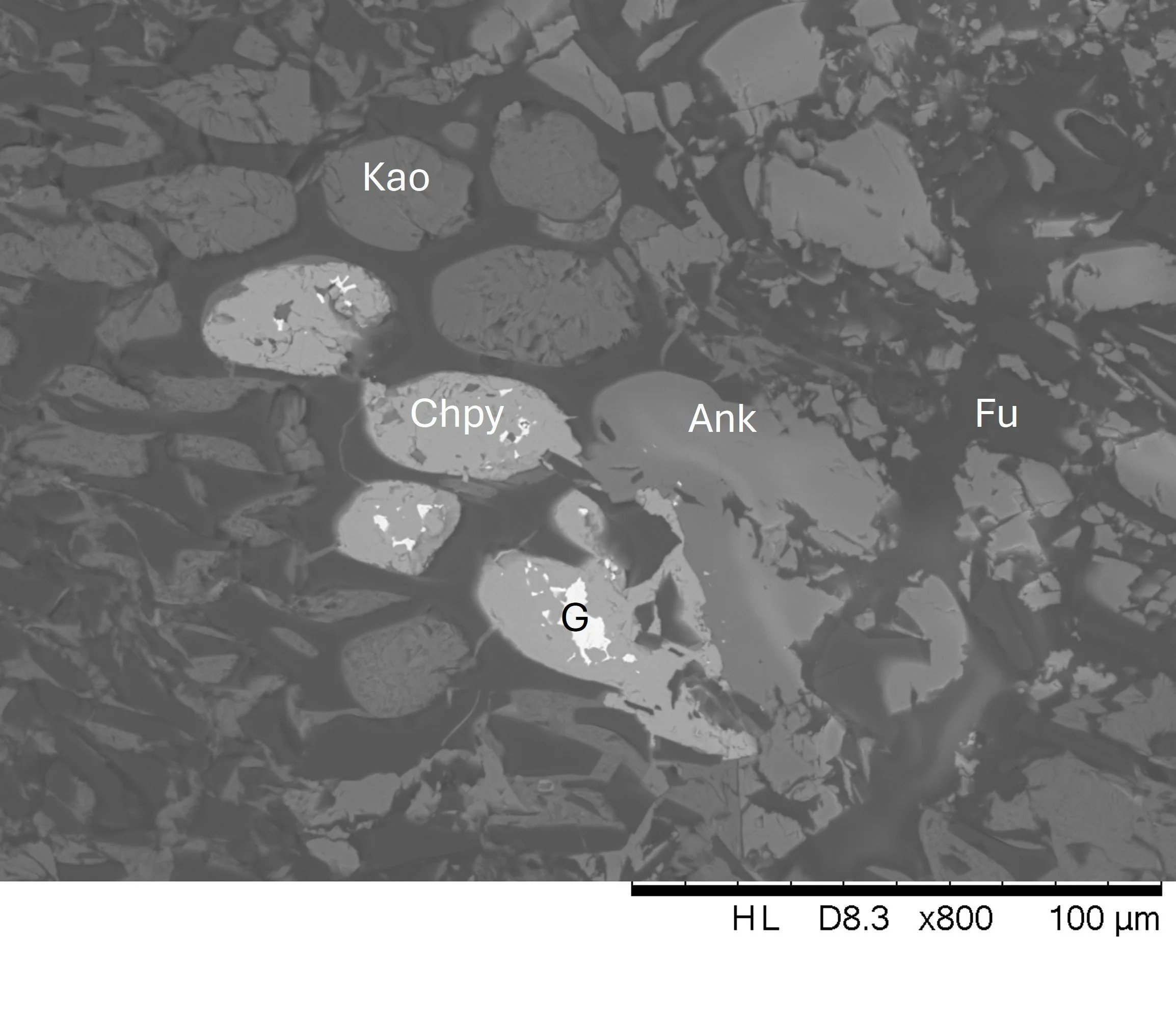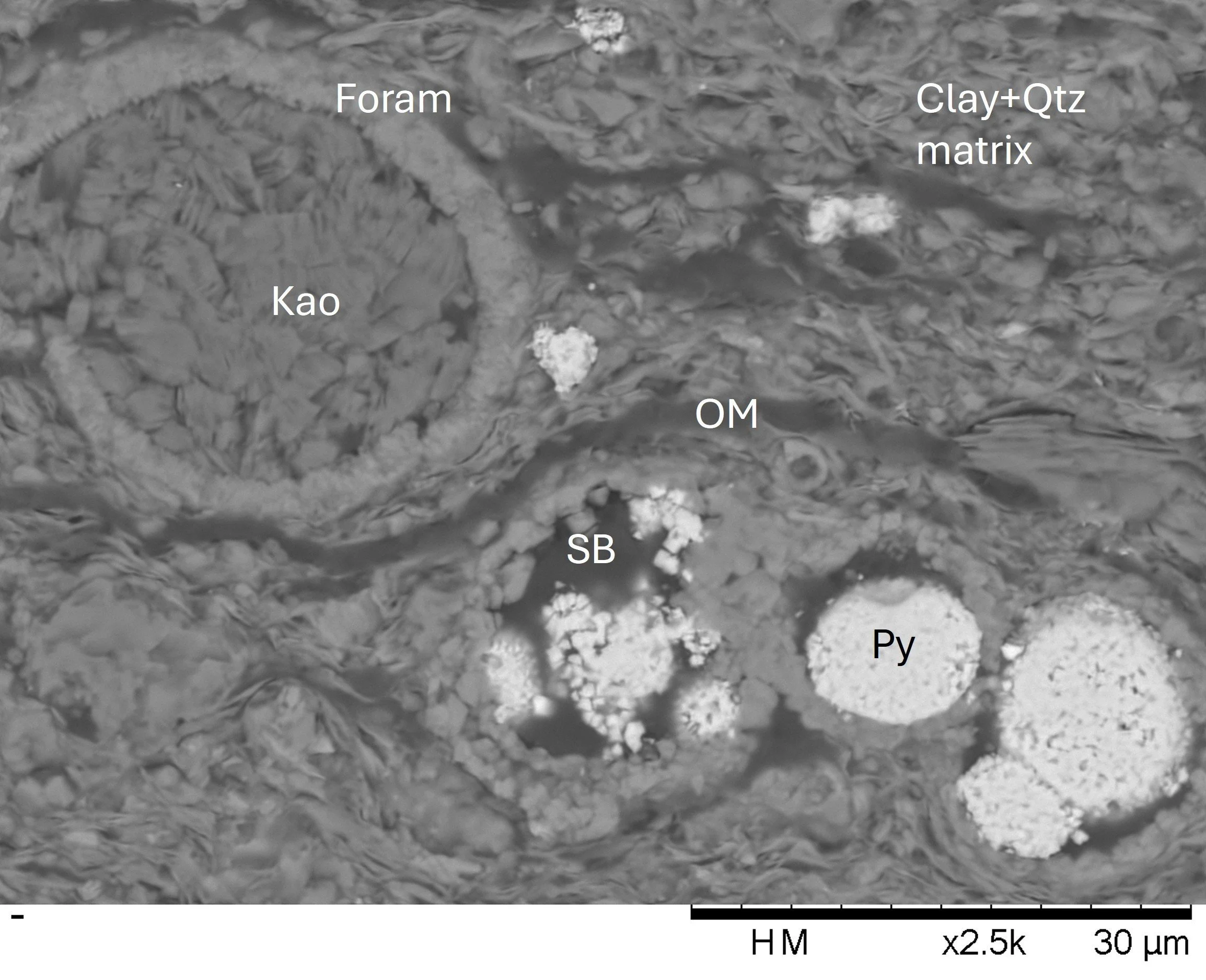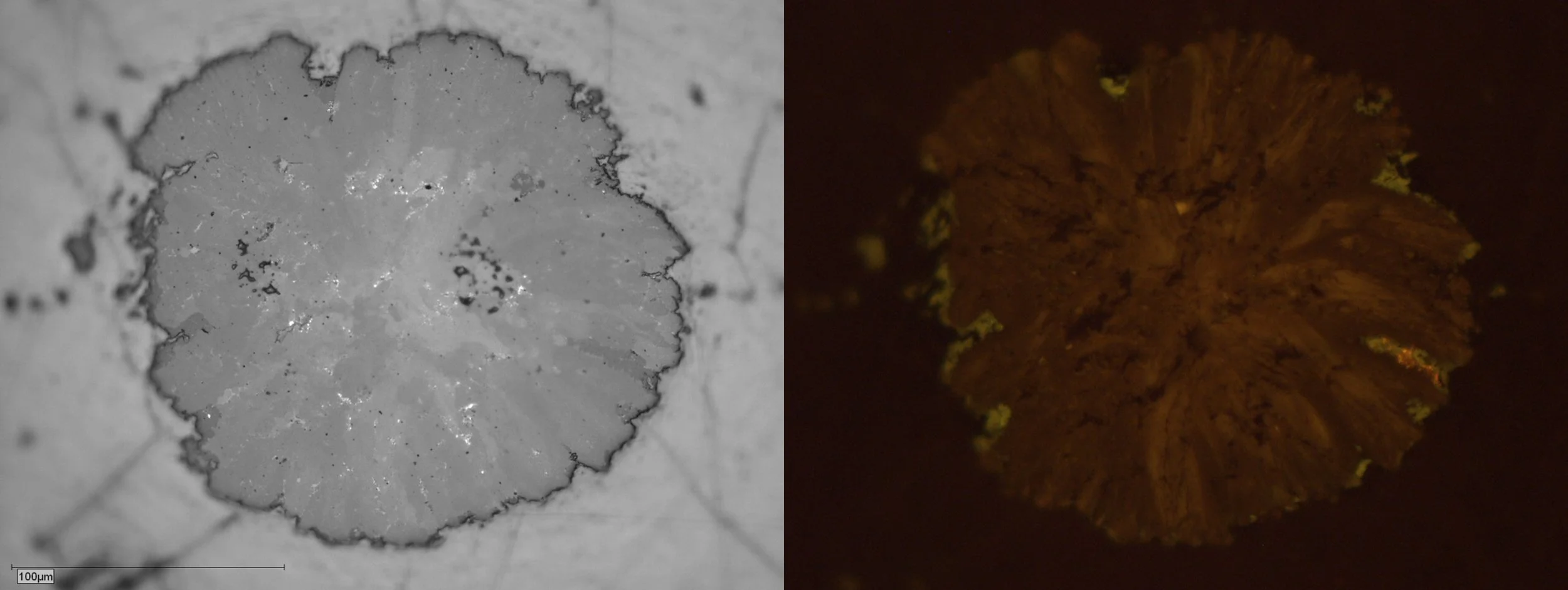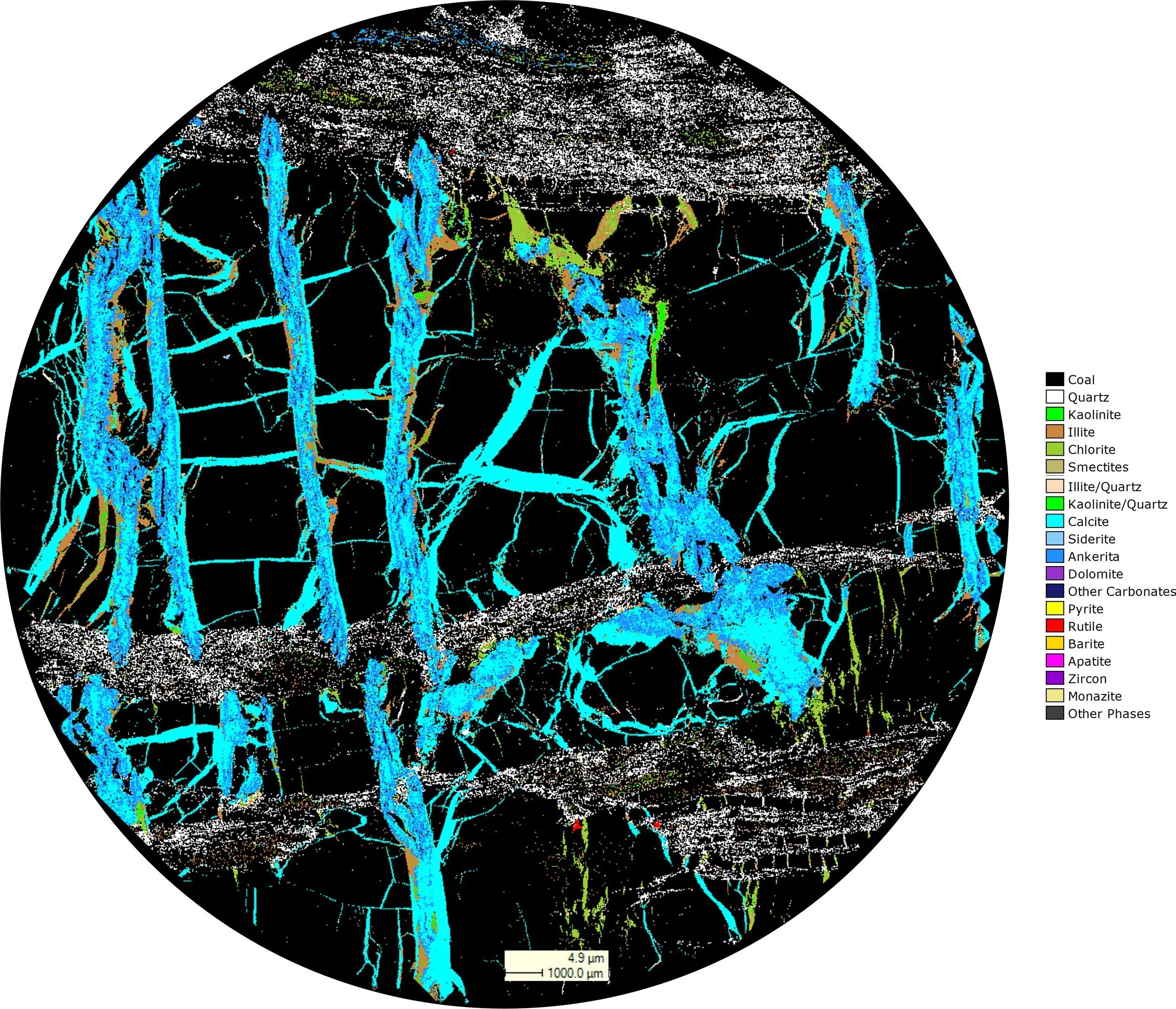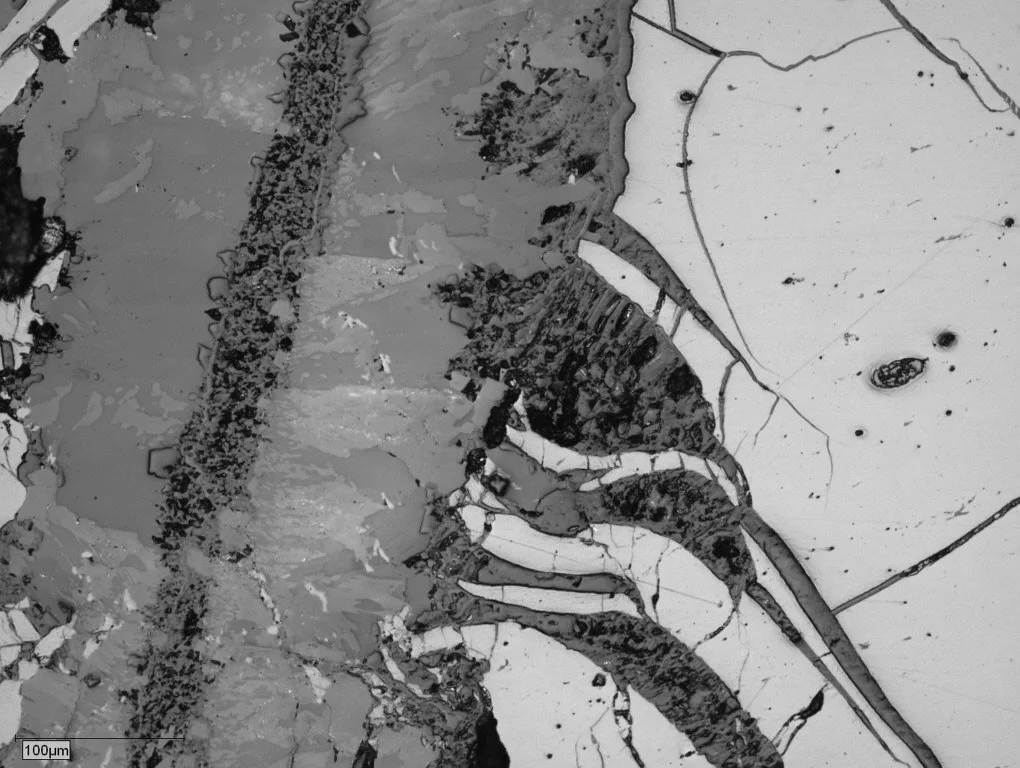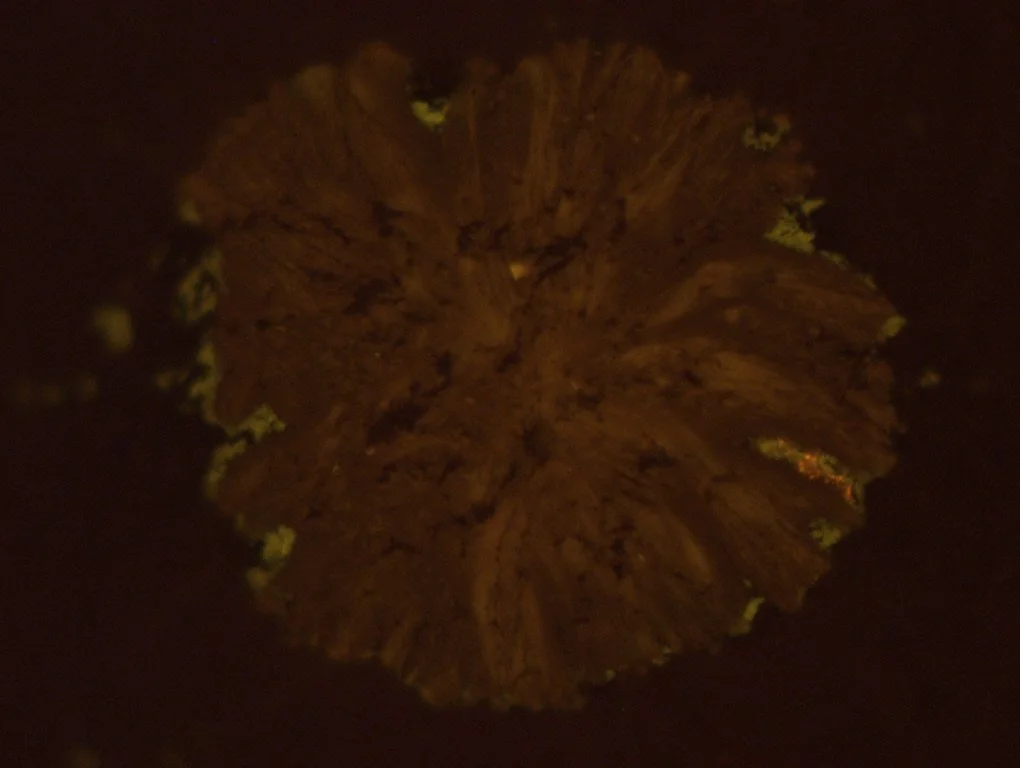
Minerals
Minerals — Controls on Coal Behaviour and Carbon Evolution
Minerals do not simply “occur” within coal or sedimentary organic matter.
They co-evolve with the organic phase, influencing reactivity, porosity, permeability, thermal pathways, and ultimately how materials behave in natural and industrial settings.
Understanding minerals is not accessory — it is often the key to explaining performance.
Origin matters
Minerals in organic-rich systems represent multiple origins, processes and effects.
They reflect the conditions of their formation.
Detrital minerals
transported by water or wind
survivors of erosion and transport
document input from catchment, shoreline, and weathering regimes
Authigenic minerals
formed within the basin
precipitated in pore waters or biogeochemical microenvironments
sensitive to redox, pH, microbial activity, and fluid evolution
Their presence captures both external sediment supply and internal diagenetic history.
Fusinite (Fu) maceral with cell lumina filled with kaolinite (Kao), ankerite (Ank) and chalcopyrite (Chpy) with galena (G) exudations. Rangal Coal Measures, Bowen Basin. SEM image in BSE mode.
Minerals do not “sit in coal” — they occupy space
How minerals relate to organic matter defines their influence:
Dispersed within the matrix — buried reactivity, hard to liberate
Nodules or concretions (e.g., siderite) — local diagenetic niches
Framboids (pyrite) — classic indicators of anoxic/euxinic conditions
Infilling lumina or fractures — reactive pathways, permeability barriers
Replacing macerals — obliteration of botanical precursors and textures
The mode of occurrence is a record of paragenesis, not an aesthetic. It tells us the sequence of mineral formation and the conditions that enabled it.
Fine-grained matrix intermixed with organic matter (OM), probably lamalginite or bituminite. Foraminifera (Foram) tests are filled with kaolinite (Kao), solid bitumen (SB) and pyrite (Py) framboids. Toolebuc Formation, Eromanga Basin. SEM image in BSE mode.
Minerals control beneficiation
Coal quality is often discussed in terms of rank or macerals, but minerals frequently decide the economics:
intimate microcrystalline associations → difficult to remove
large detrital grains → mechanically recoverable
authigenic carbonate cements → grinding inefficiencies and ash variability
sulphide distributions → corrosion, emissions, thermal instability
Laboratories measure ash.
Petrography explains why ash behaves the way it does.
Siderite nodule. Moranbah Coal Measures, Bowen Basin. Photomicrographs in reflected white light (left) and fluorescent mode (right).
Minerals dictate permeability and porosity
In source rocks and reservoirs, mineral type and grain size determine how fluids move:
clays influence compaction trajectories
pyrite development blocks pathways
silica precipitates re-seal fractures
carbonate replacement modifies pore geometry
Porosity is not an abstract property — it is the result of a mineralogical history.
Mineralogical mapping using QEMSCAN. Fractures filled with carbonates and clays. Quartz grains dispersed in mineral matter-rich layers. Fort Copper Coal Measures, Bowen Basin.
Minerals inform maturation
Some mineral phases evolve alongside the organic material:
clay crystallinity trends
carbonate recrystallisation
sulphide paragenesis
authigenic phases triggered by fluids
These mineral indicators provide context to thermal evolution, sometimes capturing events that organic matter alone does not preserve.
Different phases of mineral precipitation, including kaolinite, ankerite, calcite and quartz, inside a fracture. Fort Copper Coal Measures, Bowen Basin.
What CarbonMat examines
We interpret minerals in relation to the organic phases they accompany.
Identification of detrital vs authigenic mineral populations
Petrographic mapping of mineral–organic interfaces
Microtextural interpretation (replacement, filling, cementation)
Integration with reflectance, Raman/FTIR, and SEM/EDS
Implications for beneficiation, permeability, and operational outcomes
We do not simply list minerals. We explain their consequences.
Where this matters
Coal beneficiation and ash control
Metallurgical performance and coke degradation
Reservoir quality and unconventional resource assessment
Fluid-rock interaction studies
Hydrothermal alteration mapping
Environmental assessments and trace metal behaviour
Academic research linking diagenesis and organics
Minerals are the quiet partner of organic matter — and often the louder one when things go wrong.
Contact CarbonMat to discuss how mineral relationships are affecting your samples.
